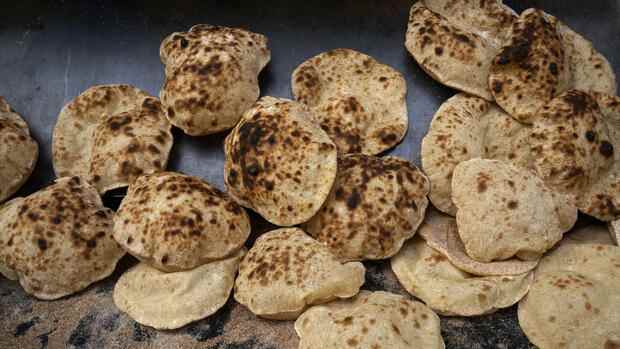Brussels If the EU got it right, it could hardly be affected by the food shortages caused by the war in Ukraine. It could even help mitigate the impact on developing countries. But EU Agriculture Commissioner Janusz Wojciechowski is planning measures that would have the opposite effect. He wants to override market mechanisms that could increase food production.
The soils in Europe are extremely fertile and farm productivity is high. So far, however, only a small part of the grain, around 20 percent, has been processed into foods such as flour, bread and pasta.
More than half of European grain is now used as animal feed. The meat and milk produced with it also contribute to the nutrition of the European population, but to a much lesser extent than grain products. It takes around ten times as much grain and soy to produce one kilogram of meat.
In theory, the meat market would now react quite quickly to the high grain prices. Because the pig farmers are already suffering from high energy prices and hardly manage to pass them on to the customers, explains Markus Kempen, who advises farms: “The meat price hardly reacts to the production costs, but almost only to the quantity offered.” When a pig is ready for slaughter is, it must also be sold.
Top jobs of the day
Find the best jobs now and
be notified by email.
Some farmers are already making losses. “Due to new husbandry regulations, many of them are already faced with the question of whether to continue their business,” says Kempen.
Market exits would therefore be expected. Then the amount of meat could fall, the price could rise and the remaining farmers could make a profit again.
Help for unprofitable businesses
At the same time, less feed would be needed, which would relieve the food market. “In Germany, a lot of wheat is fed to animals, which could alternatively be used for baking,” says Kempen.
Agriculture Commissioner Wojciechowski has other plans. He wants an “intervention in the meat sector,” he said on Thursday at a hearing in the European Parliament. The companies had already had problems before the Ukraine war and now they need support.
The admission that farmers were hardly profitable beforehand makes things tricky: state aid is intended in the crisis to save actually healthy business models. It must be avoided that unprofitable companies are kept alive with tax money.
MEP Martin Häusling (Greens) is therefore surprised at the Commission’s support for pig farming. “I don’t even know how you can come up with the idea.”
The EU exports meat to East Asia.
(Photo: dpa)
Reducing the amounts of feed for cows, pigs and poultry would be a quick way to free up raw materials for food production. Animals are fed with a mixture of different plants, the proportion of wheat can be replaced or even omitted. The around one million tons of soy that end up in the EU’s feeding troughs every month would not be needed either. Less concentrated feed would lengthen the fattening period, but would not harm the animals.
Europe already produces more meat than it consumes and in 2020 exported more than a million tons of pork alone. The Green politician Häusling sees this critically: “We don’t have to be the meat counter in the world.”
The decision on the Agriculture Commissioner’s plan has not yet been made. The agriculture ministers of the EU countries are meeting this Monday. There will also be a special session of the Commission to discuss defence, energy security and also food security. Commission Vice President Valdis Dombrovskis wants to present the result on Wednesday.
This decision will also depend on whether the EU can exert a calming influence on the world market for wheat. Prices have fluctuated wildly since the beginning of the war and are currently around 50 percent higher than before the war because there could be no exports from Ukraine and Russia. This development is supported by the fact that grain is held back in Europe as animal feed.
More Handelsblatt articles on the topic of food supply:
In contrast, it is hardly possible to increase the cultivation quantity in the short term. The federal government has already released areas that should actually have been closed for ecological reasons. But that is only one to two percent of the agricultural area, and tends to be the least fertile.
It is also very difficult to influence which plants are cultivated. Most of the wheat was sown early in winter. Few fruits are sown now.
Most of the imports from the last harvest are still stored near the fields from which they were harvested, including in Ukraine. Normally ships leave there regularly and bring the wheat to less fertile countries, especially to Africa.
But these ports are blocked by Russia. According to reports, ships carrying wheat were even sunk. This threatens starvation in many developing countries. The United Nations World Food Program (WFP) is also having trouble helping. It typically sources around half of its wheat from Ukraine. Buying it elsewhere at higher prices is not easy for the chronically underfunded WFP.
Agricultural expert Bettina Rudloff from the Stiftung Wissenschaft und Politik (SWP) calls for quick help from politicians: “As long as the situation is so risky, the logistics companies need support.” continue to operate.
More on this: Commodity Markets: These six charts show the turmoil since the outbreak of war
